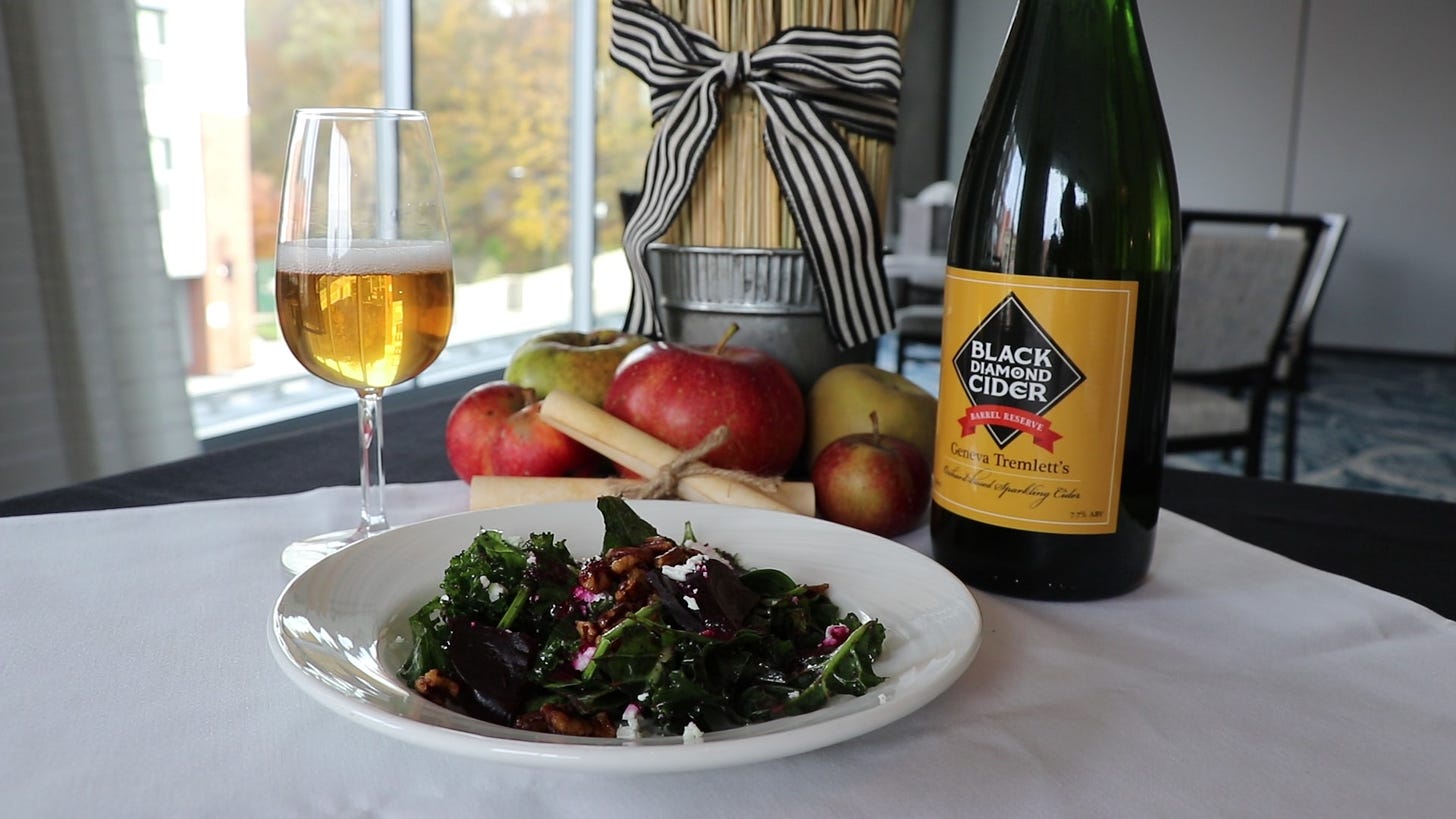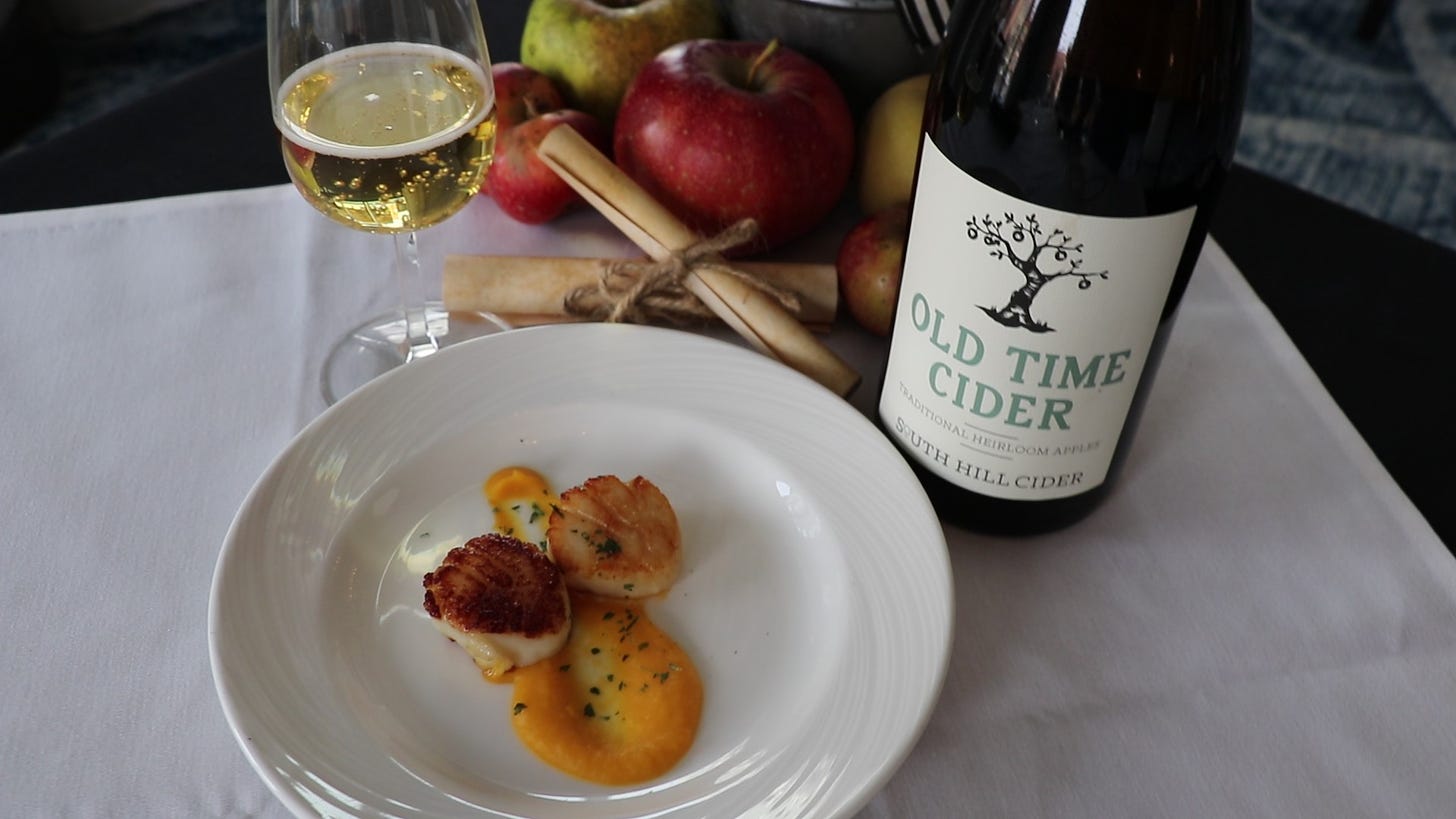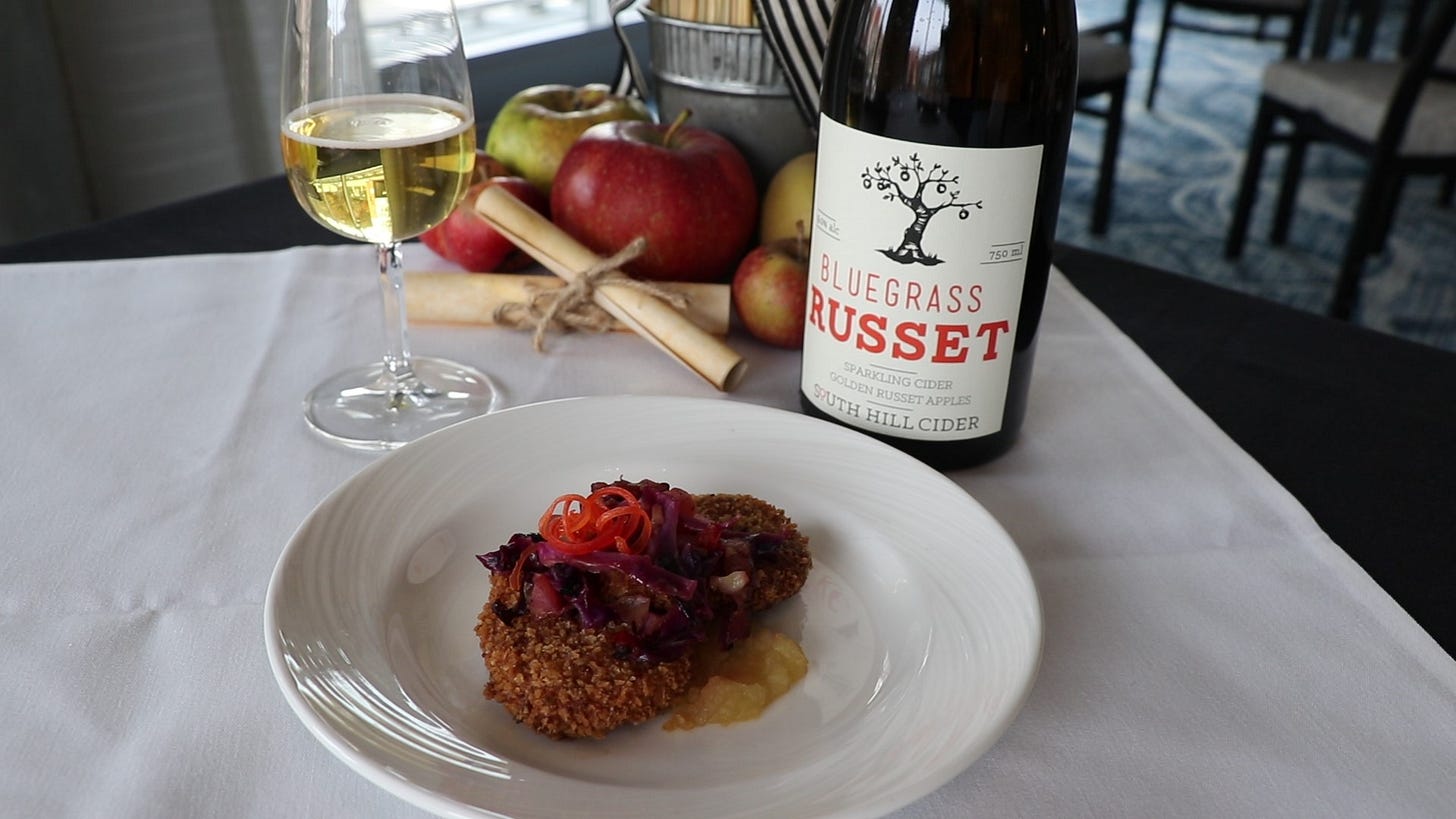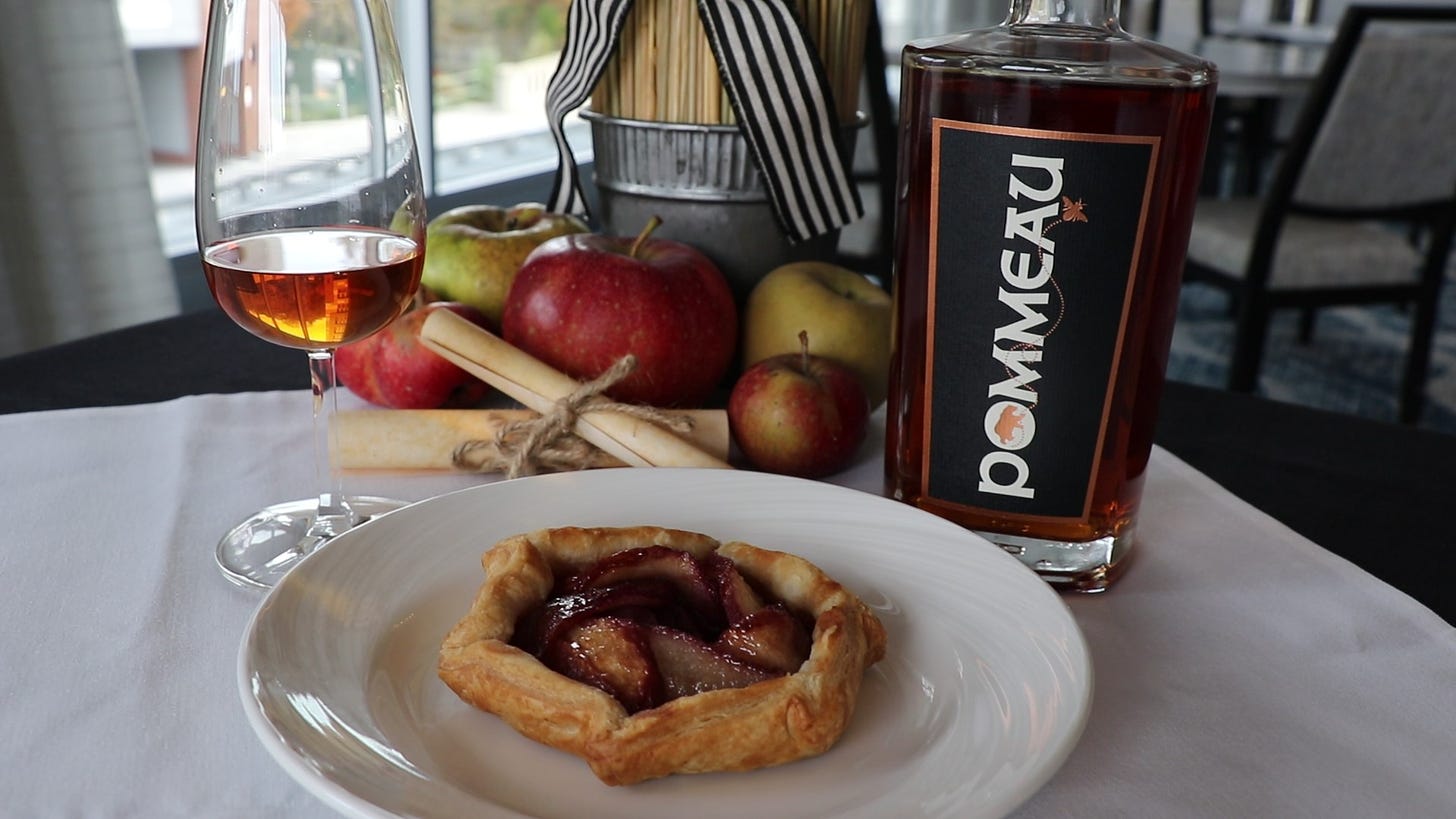Ithaca is a Cider Town
There's another beverage bubbling up in the Finger Lakes, and it's the apple of my eye
The Finger Lakes region has been my go-to vacation spot for several years now and every trip I take is always different from the last. What initially attracted me to the Finger Lakes was their legendary wines. Thanks to the diverse terroir, the microclimates around the lakes, and the passionate farmers and winemakers, the region boasts a wide spectrum of styles of wine. In fact, I always say that if you want to learn about terroir, the Finger Lakes Wine Country is the best place to get a crash course (you can read about it in a story I wrote for USA TODAY 10Best).
But what keeps me coming back is the region’s robust culinary offerings. The rural farm country that surrounds the lakes lends to its farm-to-table dining scene that’s more of a lifestyle than it is a movement. Talented chefs who are experts in their craft occupy the kitchens of restaurants that offer stunning lakeside views over rolling hills lined with vineyards. And since Ithaca is home to Cornell’s College of Agriculture and Life Sciences, one of the nation’s leading agricultural programs, farmers are always exploring new sustainable cultivation techniques.
But aside from excellent food and wine, there’s another beverage bubbling up in the Finger Lakes, specifically around Ithaca: cider!
Everything that makes the region’s terroir optimal for growing grapes makes it an incredible place to grow apples as well. Apple growing and cider production has a long history in the state of New York. The first commercial apple tree orchard was established on Long Island in 1730, and by the end of the 1700s, apples were grown throughout New York and were even exported back to England.
Despite how long cider has been produced in the United States, it hasn’t gotten that much attention. But after visiting Ithaca, I can sense a Cider Renaissance about to happen!
Ithaca is a cider town! And what makes Ithaca’s cider scene even more exciting is that it feels like a new, somewhat lawless frontier. Unlike wine which has a lot of formal processes and rules associated with it, cider makers aren’t really bound to tradition and technique, leading to a lot of fun experimentation. They’re making ciders that range from dry to sweet and effervescent to still. They’re applying winemaking techniques to create fruit-forward and tart, champagne-like cider. They’re aging cider in whiskey barrels to add more depth, and even treating cider like cognac and sherry to create dessert-like ciders (hello pommeau). Plus, there are dozens of apple varieties for cider makers to play with, and they’re blending them together and even throwing foraged wild apples into the mix to create an endless variety of exciting ciders.
For my latest installation of Tasting Notes, I sit down with lifelong Ithaca resident Felicia Barrett, the Executive Chef of Monks on the Commons in the Marriot in downtown Ithaca. She took me on a flavorful journey through the region, pairing creative dishes made with locally sourced foods with local ciders. Each cider was vastly different from the next and paired perfectly with the flavors and textures that make Ithaca and the Finger Lakes such a delicious destination!
Thank you so much to Visit Ithaca for supporting this video and to Brave World Media for inviting us to share Ithaca’s story! This video was filmed and edited by Philadelphia-based videographer, Maggie Bues.
Tasting Notes
First Course: Roasted beet salad with Lively Run Goat Cheese paired with Geneva Tremlett’s by Black Diamond Farm and Cider.
The Geneva Tremlett’s is a light, refreshing, and bubbly with a subtle sweetness that brings out the nuttiness of the toasted pecans, the earthiness of the beets, and the tanginess of the goat cheese.
Second Course: Seared scallops with butternut squash puree paired with Old Time Cider by South Hill Cider.
South Hill Cider’s Old Time Cider is smoother than you’ll expect! It’s fruit-forward and pear-like flavor lends nicely to seafood. Chef Felicia Barrett also recommends trying this cider with raw oysters!
Third Course: Fried pork tenderloin medallions with braised cabbage paired with Bluegrass Russet Sparkling Cider by South Hill Cider.
This Bluegrass Russet Sparkling Cider is a bubbly cider. It’s effervescence cuts through the fried pork, similar to how champaign cuts through fried chicken. The tangy flavors of the cabbage and the applesauce play nicely with the sparkling cider’s tart sweetness. Together, it’s a classy take on a comforting dish.
Fourth Course: Poached pear tartlet paired with Kite and String Pommeau by Finger Lakes Cider House.
In the cider world, the pommeau is one of the most anticipated and highly sought after ciders, and it’s not hard to see why. It’s almost syrupy sweet, with a honey molasses flavor that’s reminiscent of a a cognac or a sherry. It’s a dessert wine that plays well with the subtle sweetness of the pear. Despite both the tart and the cider being sweet, neither overpowers the other, but rather brings depth to each other.
#AD — This post is sponsored by Visit Ithaca









